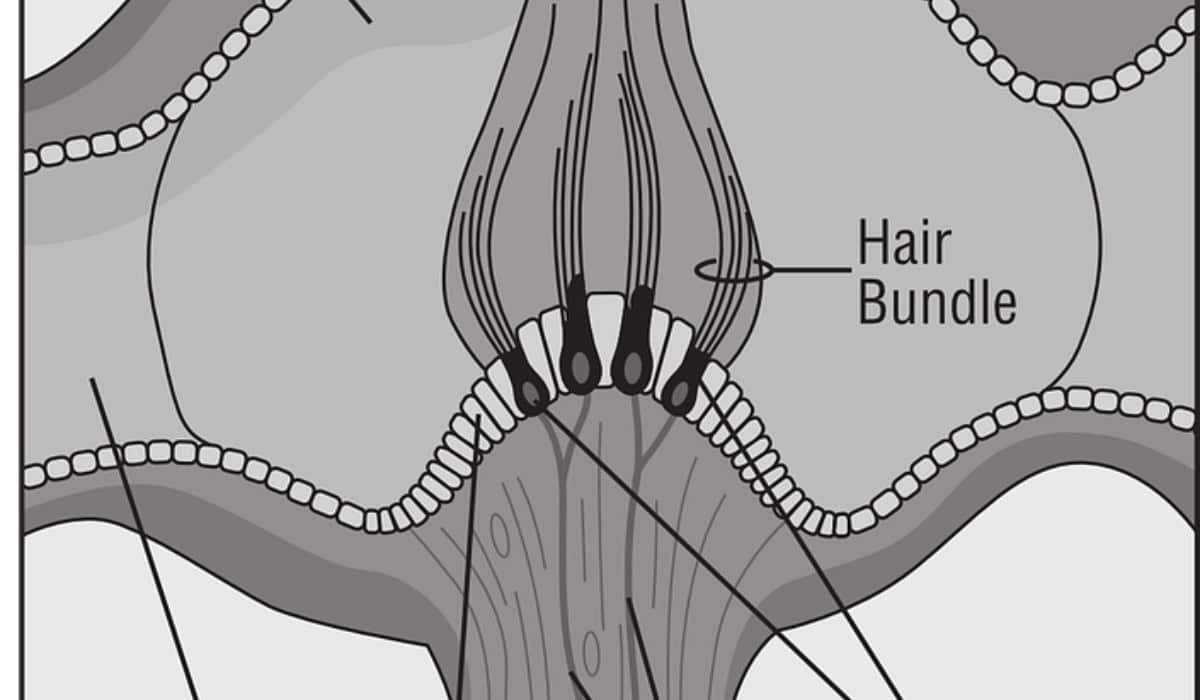Structure and Function; A Comprehensive Guide
The journey into understanding our ears begins with exploring the outer ear, a gateway that captures sounds from our environment and directs them inward. The ear is divided into three main parts; the outer ear, the middle ear, and the inner ear, each playing a pivotal role in how we perceive sound. The outer part, consisting of the auricle and the ear canal leading to the tympanic membrane, is our focus, showcasing how it functions to capture and direct sound waves efficiently into the ear.
From the external appearance that we see to the intricate workings hidden within, the outer ear’s structure is fascinating. It not only serves to collect sound but also protects the inner parts of the ear from foreign objects and contributes to our ability to locate the source of sounds. This initial interaction with sound involves converting air vibrations into electrical impulses that our brains interpret, making the outer ear an essential component of our auditory system.
Exploring the Anatomy of the Outer Ear
The outer ear’s anatomy is simple yet effective, comprising mainly the auricle or pinna, made of cartilage and skin, and the external acoustic meatus, a canal that leads to the ear drum. This structure ends at the ear drum, a boundary to the air-filled cavity of the middle ear where the smallest bones, the ear ossicles, reside. Together, these parts of the ear play crucial roles in hearing, from capturing mechanical energy in the form of sound waves to beginning their transformation into signals our brains can understand.
The Auricle’s Role in Hearing
The auricle, with its unique shape made of cartilage of the ear, is designed to catch sounds from our environment. It functions to capture and direct sound waves into the external acoustic meatus, acting like a funnel that amplifies and directs these waves efficiently. The skin of the ear and the overlying structures also play a part in this process, ensuring that sounds are captured with precision.
In the human ear, which is divided into three parts – the outer ear, middle ear, and inner ear, the auricle belongs to the outer segment, contributing significantly to how we perceive sound. It’s especially important during hearing tests, where sounds played through headphones are analyzed to understand how well sound is being captured and transmitted through the ear.
Navigating Through the External Acoustic Meatus
The external acoustic meatus is a narrow tube that extends from the outer ear to the tympanic membrane, acting as a passageway for sound to reach the ear drum. Its structure is such that it enhances the sound waves’ journey inward, ensuring they are delivered effectively to their next destination. This canal is lined with skin and contains small glands that produce earwax, offering protection and keeping the ear clean.
As sound waves travel through this tube, they are on their way to the tympanic membrane, getting ready for the next phase of conversion into mechanical energy. The external acoustic meatus plays a crucial role in maintaining ear health, shielding the inner ear from external elements and infections, highlighting its importance beyond just sound transmission.
The Tympanic Membrane and Its Critical Function
At the end of the external acoustic meatus lies the tympanic membrane, a delicate structure that vibrates in response to sound waves. This vibration is essential, as it marks the transition of sound energy into mechanical energy that can be further processed by the ear. Covered by a thin layer of mucous membrane, the tympanic membrane is finely tuned to respond to a wide range of sound frequencies.
These vibrations are then transmitted to the smallest bones in the body, located in the middle ear, kickstarting a chain reaction that eventually leads to the perception of sound. The integrity of the tympanic membrane is vital for hearing; damage to it can significantly impair the ear’s ability to transmit sound, underscoring its critical function in our auditory system.
Common Ear Problems and Their Indications
Ear problems can range from minor annoyances to significant health concerns, affecting one or both ears. Ear pain is a common symptom that can indicate various issues, from infections to blockages. Understanding the signs and symptoms of common ear problems is essential for timely intervention and care, keeping our ears in good health and ensuring our hearing remains sharp.
Otitis Externa: Causes, Symptoms, and Treatment
Otitis externa, commonly known as swimmer’s ear, is an infection of the outer ear canal. It’s often caused by water remaining in the ear after swimming, creating a moist environment that encourages bacterial growth. Symptoms include ear pain, itching, and discharge. Treatment typically involves cleaning the ear and prescribing antibiotic ear drops to combat the infection, highlighting the importance of ear care in preventing such conditions.
Preventive measures, such as drying ears thoroughly after exposure to water and avoiding inserting foreign objects into the ear, can significantly reduce the risk of developing otitis externa. For those experiencing symptoms, seeking treatment promptly can prevent the infection from worsening, ensuring a quick recovery and maintaining overall ear health.
Understanding Auricular Hematoma
An auricular hematoma occurs when blood collects between the cartilage of the ear and the overlying skin, often due to trauma or injury. This condition can cause severe pain and, in severe cases, may lead to deformation of the ear if not treated properly. The accumulation of blood disrupts the normal blood supply to the cartilage, necessitating medical intervention to drain the blood and restore the ear’s shape.
Immediate attention from a healthcare provider is crucial to prevent long-term damage. Treatment typically involves a minor procedure to evacuate the hematoma, followed by measures to ensure the ear heals correctly. Wearing protective gear during high-risk activities can help prevent such injuries, preserving the ear’s structure and function.
Symptoms and Signs of a Perforated Tympanic Membrane
A perforated tympanic membrane, or a hole in the ear drum, can result from infection, trauma, or sudden pressure changes. Symptoms often include sharp ear pain, hearing loss, and sometimes discharge. The presence of a perforation disrupts the normal function of the ear drum, affecting hearing and making the middle ear more susceptible to infections.
Diagnosis usually involves a simple examination by a healthcare provider, who can observe the perforation directly. While many perforations heal on their own, some may require medical intervention to close the gap and restore hearing. Protecting the ear from further damage and monitoring for signs of infection are critical during the healing process.
Earwax Impaction and Foreign Body Obstruction: Prevention and Care
Earwax impaction and the presence of a foreign body in the ear can cause discomfort, hearing loss, and sometimes pain. Earwax, or cerumen, plays a protective role, but excessive buildup can block the ear canal. Similarly, small objects or insects can become lodged in the ear, leading to obstruction and discomfort.
Preventive measures include avoiding the use of cotton swabs or other objects to clean the ear, as these can push wax deeper into the canal or injure the ear drum. If impaction or a foreign body is suspected, seeking professional medical help is essential for safe removal and to prevent potential damage to the sensitive structures of the ear.
How the Outer Ear Performs Its Vital Functions
The outer ear, with its unique structure of cartilage and skin, plays a crucial role in our ability to hear. From capturing sound waves with the auricle to transmitting them through the ear canal to the ear drum, each part works together seamlessly. The ear ossicles, nestled in the middle ear, further amplify these vibrations, showcasing the intricate process of hearing that begins at the very ends of our ears.
Capturing Sound Waves: The Auricle’s Unique Shape
The auricle’s design is no accident; its shape functions to capture sound waves from our surroundings, funneling them into the ear. This process is supported by the blood supply and skin of the auricle, which help maintain its structure and function. The ability of the auricle to gather sound efficiently is a testament to the remarkable engineering of the human body, designed to optimize our sense of hearing.
Understanding how the auricle works offers insight into the importance of each part of the ear in the overall process of hearing. Its role is fundamental, marking the first step in the complex journey of sound waves as they travel through our auditory system, eventually being interpreted by our brains as the sounds we hear and recognize.
Sound Transmission: From the External Acoustic Meatus to the Tympanic Membrane
The external acoustic meatus serves as a critical tube that extends the journey of sound waves towards the ear drum. Lined with a fibrocartilaginous ring, it ensures that these waves are directed accurately, minimizing loss of sound energy. This precise transmission is crucial for the proper vibration of the tympanic membrane, which then converts the sound waves into mechanical energy.
Its connection to the middle ear is vital, as the external auditory meatus not only connects the middle ear with the outside world but also protects the more delicate structures inside the ear. The efficient transfer of sound from the external acoustic meatus to the tympanic membrane highlights the sophisticated nature of our auditory system, enabling us to hear a wide range of sounds with clarity and precision.
Medical Interventions for Outer Ear Conditions
When issues arise with the outer ear, including infections, blockages, or injuries to the ear drum, timely medical intervention is key. Early diagnosis and treatment can prevent complications, ensuring the ear continues to perform its vital functions effectively. Understanding when to seek help and what types of treatments are available is crucial for maintaining good ear health.
When to Seek Medical Help for Ear Problems
If you’re experiencing persistent ear pain, hearing loss, or other symptoms affecting your ears, reaching out to a healthcare provider is essential. They can offer guidance, perform necessary examinations, and recommend appropriate treatments. Whether it’s managing an infection or addressing a blockage, professional advice ensures that your ear health is in good hands.
Remember, your ears play a crucial role in connecting you with your surroundings through sound. Taking care of them, being mindful of symptoms, and seeking medical advice when needed are key steps in preserving your hearing and overall ear health. Your healthcare provider is your partner in this journey, equipped to address concerns and support your well-being.
Advanced Testing for Diagnosing Outer Ear Issues
When you’re facing outer ear problems, doctors have tools to look closely at what’s happening. One important tool checks the health of your ear drum. It’s like a tiny camera that goes into your ear to see everything up close. This helps find the problem fast.
Another test might measure how your ear drum moves. If it doesn’t move the right way, it can tell the doctor there’s an issue. These tests are quick and they don’t hurt. They give your doctor a clear picture of what’s going on, so you can get the right help.
Preventative Measures and Home Care for Outer Ear Health
Keeping your outer ear healthy starts with simple steps at home. Be gentle when cleaning your ears to avoid hurting your ear drum. And, wearing earplugs while swimming can protect your ears from water that might cause infections. These small actions can make a big difference in keeping your outer ear healthy.
Tips for Preventing Otitis Externa and Other External Ear Infections
Otitis externa, also known as swimmer’s ear, is an ear disease that happens when water gets trapped in your ear. To prevent this, make sure to dry your ears well after swimming or showering. The glands that secrete in your ear canal produce a protective layer, but excess water can wash this away, leading to infection.
Another tip is to avoid inserting anything into your ear canal that could damage the skin, allowing bacteria or fungi to enter. This includes cotton swabs. Also, if you swim often, consider using earplugs and a cap to protect your ears. These simple steps can keep the external carotid artery and auricular branch of the vagus nerve safe from infection, helping prevent this painful condition.
Home Remedies for Minor Outer Ear Concerns
If you have a minor issue with your outer ear, like a small amount of ear wax buildup, there are safe ways to handle it at home. For example, a few drops of warm (not hot) baby oil can help soften the wax. Just be sure not to put anything hard inside your ear, like cotton swabs, because this can push the wax deeper or hurt your ear drum.
For mild discomfort, a warm compress applied to the outside of your ear can provide relief. Remember, if you’re ever unsure or if the problem seems serious, it’s best to see a doctor. Home remedies are good for minor issues, but the ear drum and other parts of the ear are delicate and need professional care when there’s a bigger problem.
A Deeper Dive Into the Outer Ear’s Complex Structures
The outer ear is more than just the part you can see. Inside, there are glands that secrete a special wax to protect your ear. This wax traps dirt and keeps bacteria away. Understanding how these glands work helps us appreciate the natural defense system of our ears.
The Importance of Vasculature and Innervation in Ear Health
Did you know that the health of your ear is closely linked to its blood supply and nerve connections? The ear is supplied by specific arteries and nerves that keep it working well. For example, the stimulation of the auricular branch of the vagus nerve can even affect your heart rate. This shows how connected our ear health is to our overall well-being.
Also, if your ear drum gets hurt, these connections play a big role in healing. They bring nutrients and signals that help fix any damage. So, taking care of your ear’s blood flow and nerve health is super important for keeping your ear drum happy and healthy.
Lymphatics of the Outer Ear: An Overview
The lymphatic drainage of the outer ear has a primary function of defending against infections. This system works like a cleanup crew, removing waste and fighting off germs. If it didn’t work right, your ear would have a hard time staying healthy.
Keeping this system in good shape helps prevent infections and other ear problems. Simple things like staying hydrated and healthy can support your lymphatic system. This way, your ears have a better chance of staying clear and infection-free.
Navigating the Future of Outer Ear Health
As we learn more about the ear, we’re finding better ways to take care of it. This includes new ways to protect the ear drum and treat common problems. With ongoing research, the future of ear health looks bright, promising better treatments and prevention methods for everyone.
Innovations in Treating Common Ear Problems
Doctors are now using new technology to treat ear pain and other issues more effectively. For example, laser treatments can help heal infections without needing surgery. And, there are new types of ear drops that work better than old ones.
These innovations mean less pain and quicker recovery times for patients. It’s an exciting time for ear health, as these advances make treatment safer and more comfortable for everyone.
The Role of Technology in Outer Ear Health Management
Technology is changing how we take care of our ears. Now, there are apps that can help you monitor your ear health and even diagnose problems early. This is great because catching issues early can make them much easier to treat.
Also, advancements in hearing aids and other devices are helping people hear better than ever before. They’re getting smaller, smarter, and more effective. This technology is giving people with hearing problems a whole new chance to hear the world around them.
Unveiling the Mysteries of Outer Ear Function and Care
The outer part of your ear plays a big role in how you hear. It starts with the part of the ear you can see, which catches sound waves and sends them deeper inside. The ear can be divided into three main parts, but it’s the outer part that grabs the sounds from your world. When these sounds travel down a tube that connects to your eardrum, something amazing happens. Your eardrum vibrates like the skin of a drum, sending these vibrations to the next part of the ear.
Caring for your outer ear is important to keep it working well. Keeping ear wax at a healthy level helps, as too much can block sounds. If you have problems like an ear infection, which can be chronic ear issues, it’s important to see a doctor. Sometimes, people might need ear surgery to fix these problems. The goal is always to make sure your ear is healthy so you can hear as best as you can. Remember, your ear is a complex system that needs a little care to do its big job of letting you hear the world.






